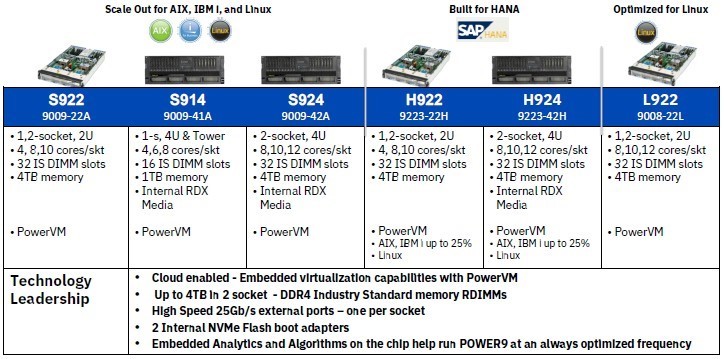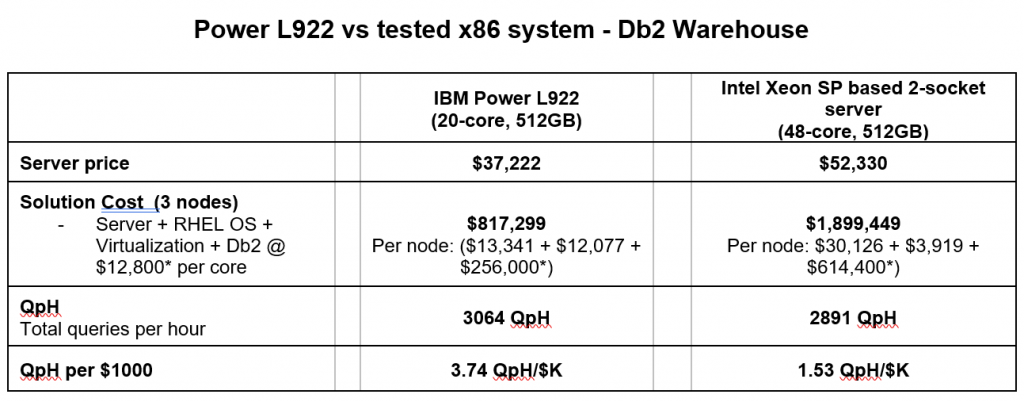The future of IBMi(AS400) and IBM Power Systems
 The Developments on the IBMi platform are almost as classic as the Fitzgerald fiction novel depicting Benjamin Button where the protagonist is born old and gets younger as time passes.
The Developments on the IBMi platform are almost as classic as the Fitzgerald fiction novel depicting Benjamin Button where the protagonist is born old and gets younger as time passes.
IBMi instead of getting “older”, becoming a legacy system and fading away is becoming more and more shinier and interesting. The advancements and the roadmap are only making the IBMi younger, better and more flexible. With IBM acquiring RedHat, there is a lot of potential of cutting edge technology integration coming to the IBMi.
What is the IBMi?
To be honest, IBMi isn’t for everyone. If you are not looking at high performance computing of insanely large amounts of data and transaction processing then the IBMi isn’t for you.
Essentially IBMi is a little mainframe for small and mid size businesses that offers these businesses data and high performance computing because it was designed for that. The IBMi platform has long been a market leader in high performance computing because of the design of the platform and how the work is managed on the system.
Migrate from the IBMi to other systems for what exactly?
Overwhelming marketing pitches from the competition and “high discount” lucrative deals are drawing people away from the IBMi to have them locked into ecosystems that will eventually reduce both their immediate ROI and long term scalability as well. However, this isn’t the case with the well informed who can measure the ROI with the IBMi really well and who have been closely watching the progress in the IBMi sphere.
This perceived cost advantage is a deal breaker in the long run for many reasons. Some of them are noted below.
1. When you move from an IBMi processor to a competitors one, you still pay “per core” for most softwares out there and considering that IBM’s processors are more than 2.5 times faster than others, it means that you pay that much in software costs eventually. Consider the performance per core factor when discounts are offered by software companies.
2. IBMi performs better at higher workloads, so if your workloads increase in future then then you will face bottlenecks in performance while the IBMi platform is designed to scale up and scale out very comfortably compared to other systems.
3. The budgets that you lock in while you move to another platform, your competitors can grab your market share when customer service is affected by delays owing to new tech, users’ learning curve etc. It makes it a more expensive engagement when overall costs are compared.
4. IBMi runs all the major programming languages like java, php, python in addition to the RPG/ILE/CL that it natively runs. It is also compatible with openssl, openssh, apache etc. Open source integration is only expected to get better which means that great software now meets great hardware while keeping costs low.
5. With the design of the IBMi that optimizes performance by identifying hot data and enabling quicker access to it, It is almost like having a database administrator by your side that comes integrated with the system. Consider the cost of hiring one when you move to other platforms.
6. If you are running virtualization then the IBMi power hypervisor by design was built into the system chip itself so this technology is always there regardless of the OS you are running whether its IBMI, LINUX, AIX . This design on the IBMi costs 2% in guest system performance compared to other hypervisors that cost around 20% which is 10 times slower than the power architecture. To top this, the newer Power Systems offer multiple ways you can deploy virtual machines.
7. The IBMi is designed with security in mind so the consider the cost of implementing security on the IBMi versus other systems.
Oh! The myths need a mention too – The green screen and lack of skills!
1. IBMi is not a “green screen” at all, it is only that if you want it to be. If you want you can manage the system from your mobile and ipad if you so wish. There are many less talked about native apps and solutions and also really good extensions in the IBMi technology partner ecosystem if you need modern tools to manage and report from the IBMi. The green screen is used by administrators who are more comfortable using it just like Linux administators who are more comfortable using the terminal even though there are graphical apps available. Its really a matter of personal preference, not a system limitation.
2. Also its not hard to find people to support the IBMi as is the argument that is used very often. Its more likely that the programs were written in old code that need to be ported to new ones because of advancements in both the operating systems and applications themselves. As noted earlier, IBMi supports a variety of languages to redesign your applications in any way you want. Programs written in Java for example would only perform better on the IBMi compared to others because of the system design. John Rockwell of all400s.com has put together a really great job board that lists the resources who are available to hire worldwide for the IBMi platform plus also a list of the companies who are still running IBMi.
Read between the lines, hardware wise Power Systems in general are way faster!
The marketing pitch of most competitors would obviously be targeted at showing samples of very small workloads where the performance is not significantly different. For example, how faster can a 1MB file be copied on an i3 vs an i7 system is not really a good way to compare system performance but contrast that with a large database file being accessed by multiple people doing edits, reading data, running reports and now we are talking. Comparing smaller workloads won’t show this disctinction over the competition because its in the bigger things that the platform excels as noted below for a Linux deployment.

If you are looking at high performance computing then it is the right time to switch to IBMi. If you are looking to redesign your applications, prefer open standards as they will offer you the flexibility to move easily to port to private/hybrid cloud and the decision will be your own on which vendor to choose then. IBMi is now available in the cloud as well from IBM as well as IBM business partners.
The Modern tech is coming to Power Systems and is only going to get better!
IBM's acquisition of RedHat promises tighter integration of Linux and Open Source Software on Power Systems so if you are running a mix of IBMi and Linux partitions in your environment then you can consolidate the workload on your Power Systems so you have the best of both technologies running on the same machine. The Power 9 processors offer greater level of support for PowerVM, KVM and Baremetal deployments.
8. IBM Power Systems are in great shape with suport for newer system to support IBM's ambitious Hybrid Cloud strategies. Running top notch systems with the most modern technologies like RedHat Openshift and Openstack would be a great way to scale your IT to give you better tech for lesser, all on the familiar hardware we have known for ages.
Should I stay or should I go?
If you are on the IBMi platform and thinking of moving to other systems, consider what you can do instead while staying on the IBMi platform…
1. Invest in high availability software that gives you the ability to switch over to another system instantly without system downtime. Maxava for example allows you to move to newer hardware without cost on the same processor groups.
2. Implement a cloud DR solution to have a better alternative to tape backup and restore which is comparatively slower.
3. Modernise your applications and port them into newer languages supported by the IBMi.
4. Invest in the new SSD enabled IBM Flashsystem devices which multiply the speed and performance over mechanical disks.
5. If you have a mix of IBMi and Linux in your environment then you can consolidate your workloads on the same machine with some LPARs running IBMi and some running Linux.
There are many Linux distributions that now run natively on IBMi - https://www.ibm.com/support/knowledgecenter/linuxonibm/liaam/liaamdistros.html
Be better informed of the hidden costs and the cost of lock in over time and take your time to decide.
Ask yourself, do you really need to switch to an ERP or to just modernize the IBMi environment? How will your costs scale when you add high availability, SSD storage and the cost in time and money for customizations on the new solution that you are considering? If you really need to switch then many major ERP systems also run on the IBMi because of the sheer performance benefits that the platform offers and it also brings down your per core licensing costs.
Innovation and being ahead brings benefits over the competition because it means you can deliver faster than them and better. IBM and Redhat both enable this ecosystem really well. Private/hybrid clouds and AI will be increasingly adopted for the conveniences they bring and if you have not tried the APIs for IBM Watson from your IBMi then you most definitely should. This is an exciting time for technological advancements and IBMi we believe is just getting started!
Recent Posts
10 Reasons Why Small Businesses Need A CRM
February 1, 2023 | Business Development
Using Java on IBM i
May 18, 2021 | AS400/IBMi
FlashCopy versus Safeguarded Copy
April 28, 2021 |
Time to move to IBM i SMBv3
April 21, 2021 |
Search
Subscribe To Our Newsletter
Join our mailing list to receive the latest news and updates from our team.
